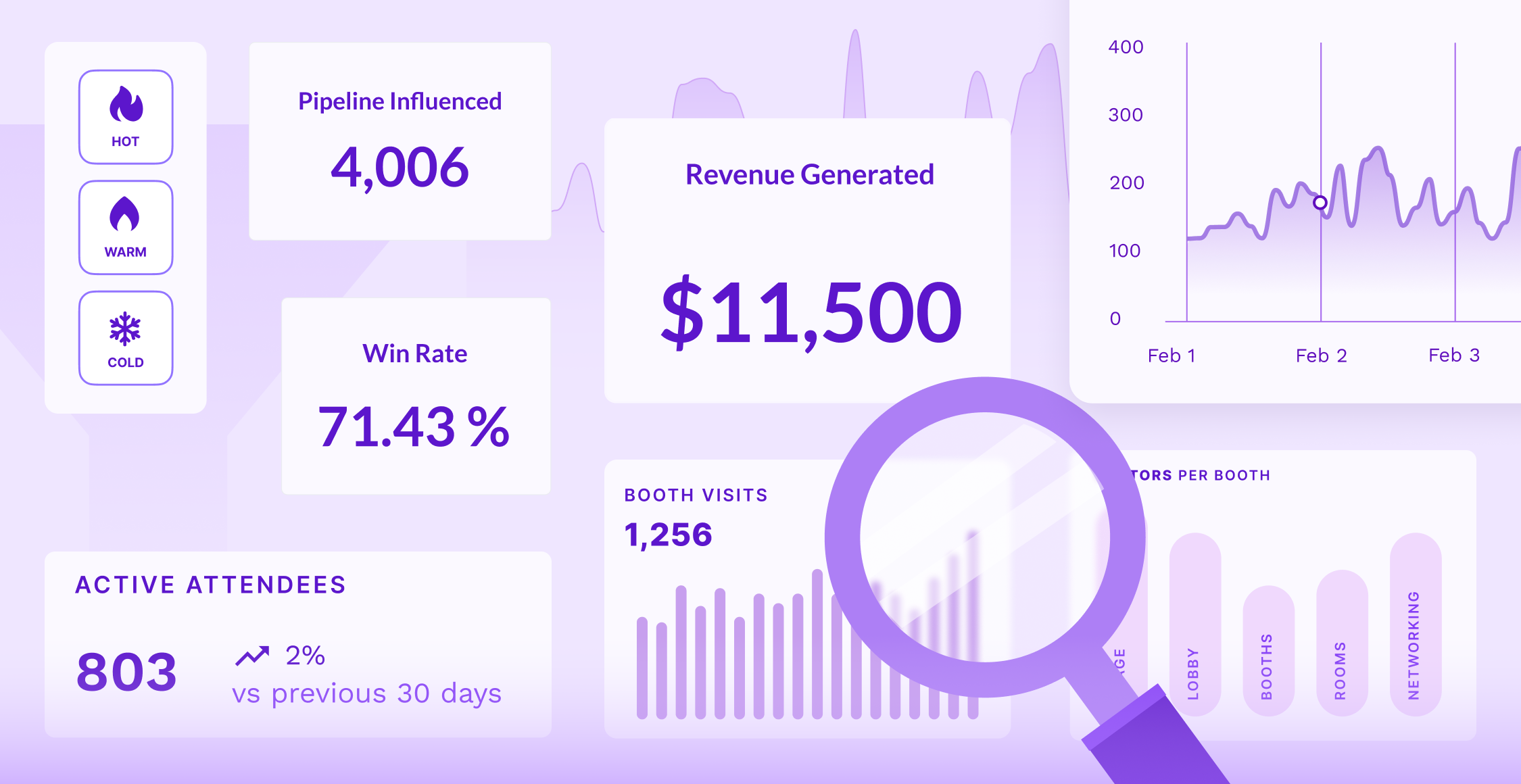We’ve all been there. You just wrapped a regional event with a tiny team, a shoestring budget, and enough coffee to power a small country. The event felt like a success, with a solid turnout, great conversations, and good energy.
But now your CMO wants numbers.
“What’s the ROI?”
And suddenly, the vibes don’t cut it.
If you’re part of a lean team running smaller conferences or local activations, proving event ROI can feel like trying to measure wind. You don’t have a 20-person analytics crew or weeks to compile data. You need fast, straightforward answers—and you need them yesterday.
This guide is your cheat code. Let’s talk about how lean teams can track, prove, and communicate ROI—without burning more hours than you spent at the actual event.
First, Let’s Redefine ROI (It’s Not Just Closed Deals)
ROI doesn’t have to mean “closed-won revenue only.” That’s important—but it’s not the whole picture.
Tiered ROI Wins You Can Report:
- Top-of-funnel: New contacts, net-new accounts, ICP engagement
- Mid-funnel: Meetings booked, demos delivered, high-intent signals
- Bottom-of-funnel: Pipeline influenced, deals accelerated, revenue closed
The secret? Set expectations before the event. Align with your marketing operations (MarkOps) or RevOps partner on what constitutes success and the attribution model you’ll use.
Step 1: Track the Right Data (Without Extra Work)
.png)
You don’t need five dashboards and a data scientist. You just need the right signals, tracked cleanly and synced to your CRM.
Must-Have Metrics:
Metric
Why It Matters
Attendee to meeting conversion
Shows sales alignment
Net-new contacts from target accounts
Indicates ICP reach
Booth visits + session scans
Real-time interest
Post-event email engagement
Warms up nurture
MQL/SQL creation
Movement in the funnel
Opps created + pipeline value
Classic ROI
Zuddl Tip: Utilize the built-in lead capture and CRM sync to automatically log, score, and make all touchpoints visible to your sales team.
Step 2: Create a Simple ROI Snapshot for Stakeholders
Not every stakeholder needs a 20-slide deck. Most just want a clear, compelling snapshot.
What to Include in Your Post-Event ROI Summary:
- of attendees
- of meetings held
- Pipeline generated or influenced
- Net-new logos touched
- Content consumption post-event
- One win story or testimonial
- Next steps (follow-ups, campaigns, etc.)
Format this in a Google Slides document or Notion and share it within 3–5 days after the event. It builds credibility and gets you ahead of the “so what?” question.
Step 3: Loop in Sales With Context (Not Just Contacts)
Leads are great. But qualified leads with context? That’s gold.
Use your event platform’s analytics to arm sales with:
- Notes on who attended what session
- What questions did they ask
- How they engaged post-event
- Where are they in the funnel
The more relevance you give sales, the more likely they’ll convert the lead into a pipeline and provide you with credit.
Zuddl Tip: Automatically route hot leads based on behavior (e.g., booth scans and session attendance) to AEs with templated follow-ups.
Step 4: Reuse the Event to Drive Ongoing Value
Proving ROI doesn’t end when the venue closes. Extend the value of the event by repurposing:
- Session recordings → Webinar-style gated assets
- Photos & quotes → Social proof on LinkedIn
- Key takeaways → Drip emails or nurture tracks
- Insights → Sales enablement content
If the event reaches 40 accounts but the content reaches 400 more, your ROI has just increased 10x.
Step 5: Use One Tool to Rule Them All

If you’re trying to prove ROI by juggling Salesforce uploads, Google Sheets, and inbox threads… you’re doing too much.
Modern event management software for smaller conferences, like Zuddl, helps you:
- Build branded reg pages
- Track every touchpoint
- Sync directly to CRMs like Salesforce
- Auto-score leads
- Attribute pipeline in real-time
And most importantly: get back hours of your life.
TL;DR: ROI Proof for Lean Teams
Here’s your quick-hit checklist:
- Align on ROI definitions before the event
- Track metrics that show movement across the funnel
- Sync data to CRM in real time
- Summarize results clearly for leadership and sales.
- Repurpose content to extend ROI
- Use software that automates most of the heavy lifting
Small team ≠ small impact. With the right mindset (and the right tools), your lean crew can drive serious pipeline—and prove it.
Need help tracking ROI for your next field event or tier 2 conference?
Zuddl helps lean teams turn every event into a revenue report. Let’s show you how
Subscribe to our blog now!











